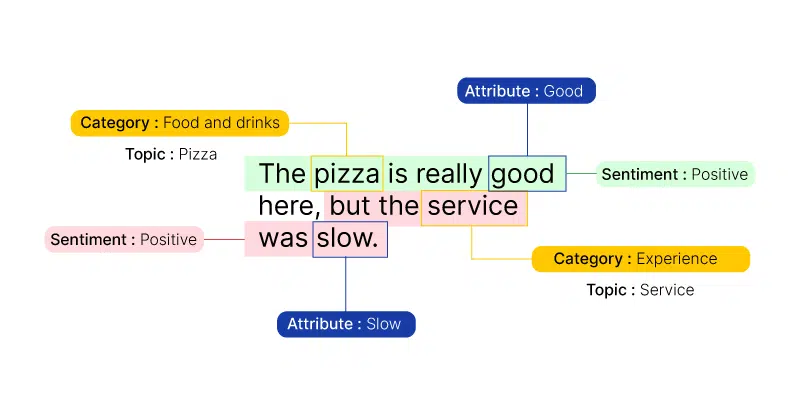In today's hyperconnected world, customers are the lifeblood of any business. Their satisfaction is not merely a vanity metric; it's a fundamental indicator of a company's health and future success. The Customer Satisfaction (CSAT) metric and the Satisfaction Meter play pivotal roles in gauging how well a business is doing in meeting its customers' needs and expectations. To excel in this realm, companies are increasingly turning to Artificial Intelligence (AI) and sentiment analysis to delve deeper into customer feedback. In this blog post, we'll embark on a journey through the fascinating landscape of AI and sentiment analysis, exploring how they redefine the understanding of customer feedback and elevate service quality.
1. The Heart of Customer Experience: CSAT and Satisfaction Meter
CSAT and the Satisfaction Meter are two vital metrics that businesses use to measure customer satisfaction. CSAT usually involves customers rating their satisfaction with a product or service on a scale, while the Satisfaction Meter provides real-time feedback during or after an interaction. These metrics have long been the cornerstone of customer feedback analysis.
AI enters this equation as a force multiplier. Its ability to analyze vast amounts of data quickly and accurately is a game-changer. AI-driven sentiment analysis takes these metrics to new heights by deciphering not just the numerical scores but also the underlying emotions and nuances of customer feedback.
2. The Evolution of Sentiment Analysis
Traditional sentiment analysis involved manually sifting through customer reviews and feedback, a process that was not only time-consuming but also prone to human bias. AI has revolutionized this by automating the process. It can now comb through an avalanche of customer comments and extract valuable insights within seconds.
Moreover, sentiment analysis has evolved from basic positive/negative categorization to a more nuanced understanding. AI systems can detect sentiments like joy, frustration, or indifference, providing businesses with a comprehensive view of customer emotions. This evolution is crucial in understanding the multifaceted nature of customer feedback.
3. Unmasking the Voice of the Customer
Customer feedback is often akin to a cryptic message waiting to be deciphered. AI and sentiment analysis serve as the Rosetta Stone, translating this message into actionable insights. By uncovering the sentiment behind words, businesses can address pain points, replicate successes, and enhance the overall customer experience.
For instance, if sentiment analysis reveals a surge in negative comments related to slow response times, a company can promptly address this issue. Active voice AI-powered chatbots or streamlined customer service processes can then be implemented to improve response times and consequently boost satisfaction.
4. Improving Service Quality through AI Insights
The insights derived from AI-powered sentiment analysis are more than just interesting observations; they are invaluable tools for enhancing service quality. Businesses can identify patterns and trends in customer feedback that may have otherwise gone unnoticed.
For instance, if a retail company notices that the sentiment in customer feedback becomes overwhelmingly positive after the launch of a new loyalty program, they can infer that the program is well-received. This information can guide the company to invest more in similar initiatives that enhance customer satisfaction.
5. Real-time Feedback for Immediate Action
One of the remarkable aspects of AI-driven sentiment analysis is its ability to provide real-time feedback. The Satisfaction Meter, integrated with AI, can offer immediate insights into customer sentiment during interactions. This means that businesses can pivot quickly when needed.
For instance, if an airline company notices a surge in negative sentiment on social media due to flight delays, they can use AI to gauge the extent of the issue and respond promptly with compensation offers or alternative travel arrangements. This swift response can turn a potentially damaging situation into a positive customer experience.
6. Nurturing Customer Loyalty
Understanding customer sentiment isn't just about resolving complaints; it's also about nurturing customer loyalty. Satisfied customers are more likely to become loyal customers, and AI helps in achieving this by continuously monitoring customer sentiment.
If a subscription-based streaming service notices that users express excitement and satisfaction with newly added content, they can use this information to prioritize similar content in the future, keeping their audience engaged and loyal.
7. Predictive Insights for Future Success
AI doesn't just help in understanding current customer feedback; it also offers predictive insights. By analyzing historical data and customer sentiments, businesses can anticipate future trends and proactively adapt their strategies.
For example, an e-commerce platform can predict an upcoming surge in demand for winter clothing by analyzing past sentiment trends related to seasonal purchases. This enables them to stock up and market winter clothing well in advance, staying ahead of the competition.
8. Balancing Automation and the Human Touch
While AI plays a crucial role in sentiment analysis, it's important to strike a balance between automation and the human touch. Some aspects of customer service are best handled by empathetic human agents who can address complex emotional issues.
AI can assist by categorizing and prioritizing customer feedback, ensuring that human agents focus on the most critical and emotionally charged cases. This balance ensures that customers receive the best of both worlds: the efficiency of AI and the empathy of human agents.
9. The Future of AI and Sentiment Analysis in Customer Service
As AI technology continues to advance, the future of customer service holds even greater promise. AI-driven sentiment analysis will become more sophisticated, enabling businesses to understand and cater to customer needs in ways that were previously unimaginable.
In conclusion, AI and sentiment analysis are transforming the way businesses understand and act upon customer feedback. They elevate CSAT, Satisfaction Meter, and service quality to new heights, providing businesses with a competitive edge in a customer-centric world.
Incorporating AI-powered sentiment analysis is no longer a choice but a necessity for businesses looking to thrive in an increasingly competitive marketplace. It's the compass that guides them on the path to meeting customer expectations and securing long-term success.


